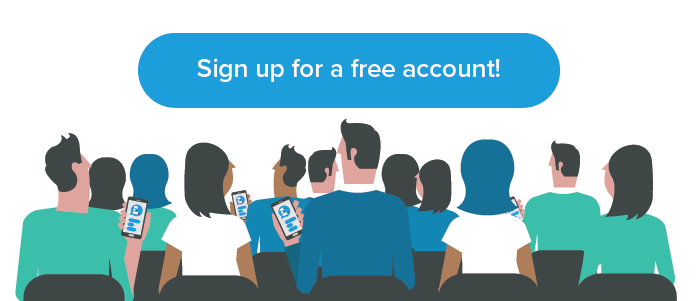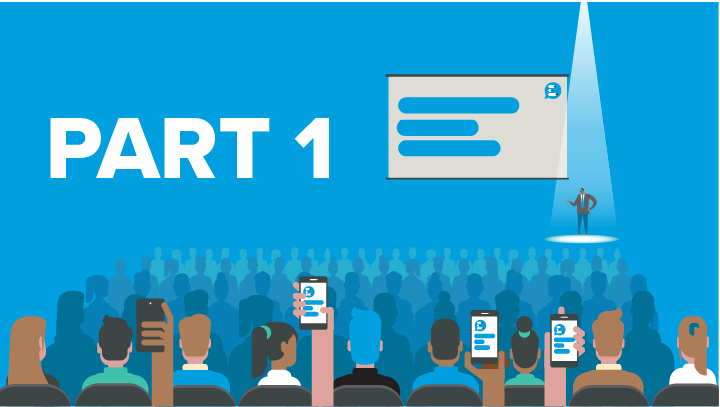Townhall meetings are vital for building trust and delivering company messages. They also offer an opportunity to provide employees with a valuable communications channel. Senior leaders can use this townhall meeting as an opportunity to connect with all their employees, to share their ideas or company results and to motivate and inspire their workforce.
Q&A sessions are integral for engaging employees in company townhall meetings and giving your employees an opportunity to have a voice. Q&A faux-pas such as not allowing enough time for audience Q&A, not making it accessible to employees to give their feedback or be part of the dialogue is not acceptable in the modern era of townhalls, especially with the Q&A tools available to make these meetings interactive. If you want to ensure you are not on the forbidden list of “Q&A fails” then read our essential Q&A planning tips below.
If you have already read part 1 of this Q&A tips blog then you can skip ahead on to part 2 here.
1. Think about your Q&A strategy
A research study from the Employee Engagement Agency, People Lab shows that only “42% of organisations have an employee engagement strategy”. It’s likely that this number would be even less if companies were asked if they have a Q&A plan for their townhall within this strategy. As with any business activity, it’s essential to establish the objectives of your Q&A session, especially as you have invested the time and money of everyone being there! Here are some Q&A styles that you might want to consider:
-
Feedback Q&A: These are great for obtaining specific feedback from your employees. A good example of how this Q&A type can be used is when management teams are looking for suggestions for improvements before changes are implemented or after a change to see if the desired result has been achieved. For best results open the Q&A board before a meeting to crowdsource the topics or questions to be covered. Then the most popular topics can be grouped together ahead of time to consolidate a Q&A session that is centered on providing actionable answers and valuable results. If appropriate, for true democracy, why not run a live poll to decide the final outcome? This focused Q&A method has been used successfully by a global pharmaceutical organization that used Vevox to collect feedback from their 100,000 strong workforce!
-
Open Q&A: Sometimes townhall meetings are just the start of a longer conversation. When this is the case, leave your Q&A open after the meeting so employees can feedback in their own time based on their reaction to the presentation.
-
Ask the CEO: It’s astonishing that in mid to large organisations that around a quarter of all employees do not know their CEOs name[1]. An ask the CEO session allows employees to feel closer to the senior leadership team and to know that they are being listened to. Concerned about inappropriate or offensive remarks? This is where our moderation feature comes in handy to eliminate any potentially embarrassing moments and our automatic profanity filter also gives peace of mind. By setting your Q&A to moderation mode with ‘sort by likes’ to see the most popular questions, you can then pick and choose which popular questions should be answered by the CEO, giving you complete control and still allowing employees to have a voice.
2. Building Q&A awareness
Q&A sessions are all about finding out what your workforce is thinking and relying upon audience participation. Participation rates are often impacted by the awareness and instruction messages that are communicated to employees, so it’s important that you give some thought as to how you are going to effectively inform people of any Q&A instructions.
Many internal communicators use a multi-touch approach for getting this information across to their workforce, but the right approach for you will often depend on the size and culture of your organization. However, the more awareness you bring to your Q&A tool the better, especially if you are a large organization with regional offices. Here some examples of how our customers have communicated the awareness of the Q&A app Vevox:
-
Send the joining instructions in advance of the meeting via email or other internal tools (mobile or app notifications, intranet notices or secure ESN announcements). Remember to include the unique web link or the meeting ID if pushing employees to Vevox’s native apps.
-
Allow employees to save these instructions or send reminder notifications when it gets closer to the meeting. Reminders on the day are vital.
-
Branded graphics with instructions, handouts and multiple signs are a great way to drive awareness. We often find that large plasma screens displaying this instructional information, before and throughout the whole meeting broadcast helps to remind people of how to participate in the Q&A.
-
If you’re delivering a PowerPoint presentation make sure that the Vevox joining instructions are also on every presentation slide so it gives employees a chance to join mid-way through the meeting should they arrive at a later point.
-
3. Encourage your employees to interact
All of these internal marketing activities will encourage employees to ‘show up’ but how can you influence them to take part?
If your employees do not understand the value of participation and the benefits to them or the organization, then it is unlikely they will want to take part. One of the biggest questions we get asked is ‘How can we improve adoption rates?’ So here is a list of our tried and tested recommendations…
-
Ensure the CEO or any senior leader facilitating the townhall delivers a message of encouragement for participating in Q&A via your chosen tool. It is more significant when verbal communication comes from the top and it gives your employees a chance to connect to the senior leaders and shows them the importance of submitting their ideas or questions so they can be heard.
-
Give your employees several verbal reminders to submit their questions or messages during the meeting or presentation so that the Q&A time can be used effectively to give answers – not waiting for the questions to come in.
-
In your internal communications, make sure that the ‘What’s in it for me’ (WIIFM) is explained. Emphasize the value of their contribution and explain how the feedback or questions will be used – this is their opportunity to be heard by the management/senior leadership team.
-
Practice makes perfect! Your first Q&A session might not see 100% adoption rate and persistence is key to increasing this Q&A engagement overtime. As employees start to become familiar with using Vevox and see results, you’ll find more staff will want to get involved!
Enjoying our Q&A tips so far? Carry on to part 2 to read the other essential Q&A planning tips.





